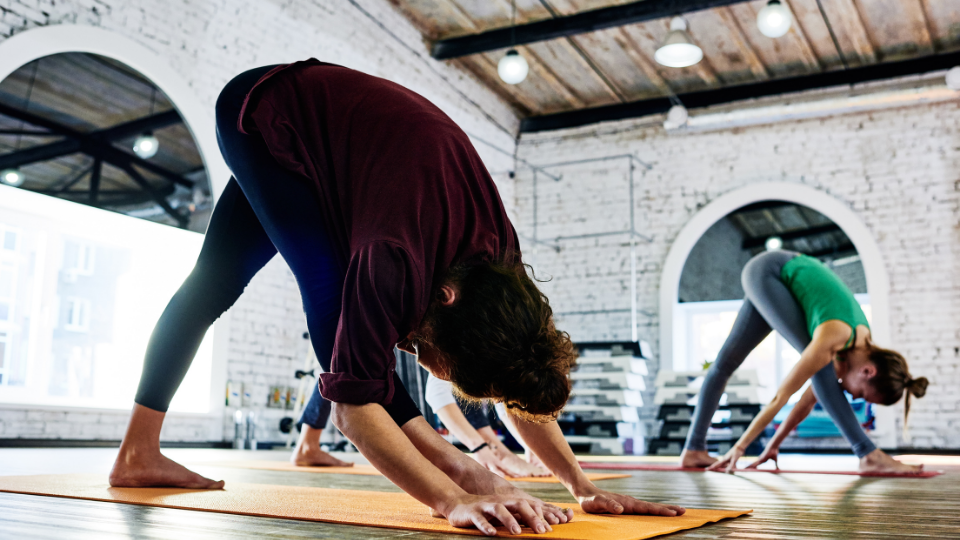Benefits of Exercise on Mind Function

According to the Centers for Disease Control and Prevention (CDC), 50 percent of U.S. adults do not engage in the recommended levels of physical activity (CDC, 2012). Regular physical exercise is evidenced to provide benefits for both physical and mental health, as well as provide protective factors that reduce the incidence of mental health problems (Hegberg & Tone, 2014; Raglin & Wilson, 2012). Exercise helps strengthen the heart and muscles, prevents disease, contributes to weight loss, and provides added energy to accomplish everyday tasks (Robinson, 2014).
Exercise and the Brain
Physical activity has been established as important for the prevention of cardiovascular disease, diabetes, and other health outcomes. Additionally, regular physical activity has been associated with emotional and mental health well-being (Puett et al., 2014). Regular exercise is important for the development and well-being of the brain because it helps to train the brain and keep the brain healthy. Basically, exercise provides alertness and the ability to complete tasks (Robinson, 2014).Overall, what is good for the heart is also good for the brain. Aerobic exercise (e.g., running, swimming, bicycling) is performed over an extended period of time, raises the heart rate, and requires an increase in oxygen. Aerobic exercise is particularly beneficial for the mind because it improves oxygen flow to the brain, which aids in mending damaged brain cells. In addition, aerobic exercise increases the size of the hippocampus, which is located in the brain. The hippocampus serves as an important component in the brain by forming, organizing, and storing memories. Physical activity stimulates the release of mood enhancing hormones and provides a healthy environment beneficial for brain cell growth (Hogan, Mata, & Carstensen, 2013).
Exercise and Cognition
Cognition refers to the processing of sensory information such as attention, memory, and reasoning. Exercise offers mental health benefits including attention to detail, task switching, working memory, and general academic achievement (Fitzsimmons et al., 2014). In addition, researchers have found that cognitive decline and dementia can be delayed when individuals engage in a physically active lifestyle (Smith, Potter, McLaren, & Blumenthal, 2013). Exercise can help our brain focus on tasks, make better decisions, and improve our productivity and response time (Hogan, Mata, & Carstensen, 2013).
Exercise and Stress
Stress-related mental health issues (e.g., burnout, anxiety, and depression) have become critical public health matters that affect individuals in occupational settings. Burnout, anxiety, and depression have been linked to increased turnover and absenteeism rates and lower job performance. In addition, burnout has been identified as an important health hazard, associated with cardiovascular diseases, disturbed sleep, depression, and general anxiety disorders (Gerber, Jonsdottir, Lindwall, & Ahlborg, 2014). Individuals can combat stressful experiences and the development of health problems by employing effective coping strategies. Furthermore, exercise has been established as a useful resource that helps to increase emotional well-being and decrease psychological stress by serving as a buffer for the negative effects of stress (Klaperski, von Dawans, Heinrichs, & Fuchs, 2013; Puett et al., 2014).
Effective Strategies for Boosting Physical and Mental Health
Exercises that involve coordination and cardiovascular endurance have been shown to have the largest impacts on physical and mental health (Robinson, 2014). The CDC (2008) recommends 150 minutes of moderate intensity aerobic activity per week to generate substantial physical and mental health benefits.
Choose an enjoyable exercise
Choosing an exercise that you enjoy will help you to stick with an exercise program. Match the activity to your ability level. People tend to spend more time doing things they enjoy.
Set a SMART goal
Make sure the goal is Specific to what needs to be accomplished. The goal should be Measurable, so progress can be tracked. Goals should be Action-oriented by including physical tasks. The goal should also be Realistic, not impossible, but still challenging. Finally, the goal should include a Time frame for when it will be attained (McDonald & Trost, 2015).
Join an exercise class
Exercise classes can be a great way to combine physical activity with meeting new people. Fitness facilities oftentimes offer interactive activities such as yoga, Zumba, and spinning classes. Exercise classes also provide opportunities to receive support and motivation from classmates.
Hire a fitness trainer
Fitness trainers can be a valuable resource for individuals. Instructors can provide one-on-one training sessions, as well as individualized exercise plans that are geared to maximize results.
Track progress using an electric activity tracker
Electronic activity trackers, such as pedometers or Fitbits, automatically count steps and distance. Some devices have the ability to calculate calories burned, food intake, and exercise duration. The devices can also sync with a smart phone or other electronic device, so results are easily tracked day to day.
Form healthy habits
Incorporate physical activity into daily routines by walking to work, taking the stairs, riding a bike, or standing and stretching at work.
Conclusion
Regular physical activity is one of the best ways to improve overall health. Anyone can gain health benefits from exercising, regardless of age, ethnicity, shape, or size (CDC, 2008). Sometimes the first step is the hardest; remember to start where you are and move forward. By making exercise a priority in your life you can improve brain function, increase quality of life, and extend life expectancy.
References
- Centers for Disease Control and Prevention. (2012). Health, United States, 2013. Retrieved from http://www.cdc.gov/nchs/data/hus/hus13.pdf #068.
- Fitzsimmons, P. T., Maher, J. P., Doerksen, S. E., Elavsky, S., Rebar, A. L., & Conroy, D. E. (2014). A daily process analysis of physical activity, sedentary behavior, and perceived cognitive abilities. Psychology of Sport and Exercise, 15, 498-504.
- Gerber, M., Jonsdottir, I. H., Lindwall, M., & Ahlborg, G. (2014). Physical activity in employees with differing occupational stress and mental health profiles: A latent profile analysis. Psychology of Sport and Exercise, 15, 649-658.
- Hegberg, N. J., & Tone, E. B. (2014). Physical activity and stress resilience: Considering those at-risk for developing mental health problems. Mental Health and Physical Activity, 8, 1-7.
- Hogan, C. L., Mata, J., & Carstensen, L. L. (2013). Exercise holds immediate benefits for affect and cognition in younger and older adults. Psychology and Aging, 28(2), 587-594.
- Klaperski, S., von Dawans, B., Heinrichs, M., & Fuchs, R. (2013). Does the level of physical exercise affect physiological and psychological responses to psychosocial stress in women? Psychology of Sport and Exercise, 14, 266-274.
- McDonald, S. M., & Trost, S. G. (2015). The effects of a goal setting intervention on aerobic fitness in middle school students. Journal of Teaching in Physical Education, 34, 576-587.
- Puett, R., Teas, J., Espana-Romero, V., Garcia Artero, E., Lee, D., Baruth, M., Sui, X., Montresor-Lopez, J., & Blair, S. N. (2014). Physical activity: Does environment make a difference for tension, stress, emotional outlook, and perceptions of health status? Journal of Physical Activity and Health, 11, 1503-1511.
- Raglin, J., & Wilson, G. (2012). Exercise and its effects on mental health. In C. Bouchard, S. N. Blair, & W. L. Haskell (Eds.), Physical Activity and Health (2nd ed.), (pp. 331-342). Leeds: Human Kinetics.
- Robinson, A. M. (2014). Exercise and the brain: Impacts on cognition, neural function, and mental health (Doctoral dissertation, Dartmouth College). Retrieved from http://libarchive.dartmouth.edu/cdm/ref/collection/dcdis/id/125111.
- Smith, P. J., Potter, G. G., McLaren, M. E., & Blumenthal, J. A. (2013). Impact of aerobic exercise on neurobehavioral outcomes. Mental Health and Physical Activity, 6, 139-153.
- U.S. Department of Health and Human Services. (2008). 2008 physical activity guidelines for Americans. Retrieved from
http://health.gov/paguidelines/pdf/paguide.pdf.
Authors
Cindy Nelson, Extension Associate Professor; Shannon Cromwell, Extension Associate Professor
Related Research












